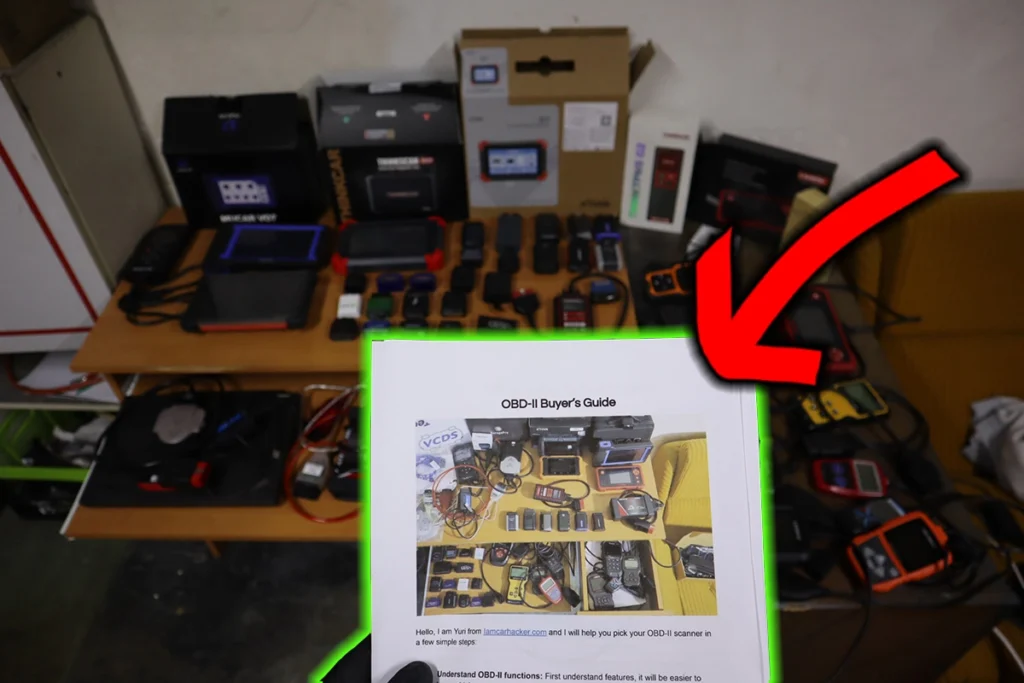The code P0123: Throttle/Pedal Position Sensor/Switch “A” Circuit High Input indicates a problem with the throttle position sensor, where the input signal to the engine’s control system is registering too high. This issue is commonly caused by a faulty sensor, wiring problems, or malfunctions in the engine’s control unit.
P0123 quick overview
| Meaning | P0123: Throttle/Pedal Position Sensor/Switch “A” Circuit High Input |
| Is it serious? | Yes, it can affect the vehicle’s drivability and fuel efficiency, potentially causing erratic throttle response or idle issues. |
| Possible causes | – Faulty throttle position sensor (TPS) – Wiring or connector issues related to the TPS – Problems with the Powertrain Control Module (PCM) or Engine Control Module (ECM) – Vacuum leaks in the intake system – Short circuits or electrical disturbances in related systems (e.g., clockspring) |
| How to diagnose? | Inspect TPS: Check the throttle position sensor for damage or malfunction. Check Wiring and Connectors: Examine the wiring and connectors leading to the TPS for any signs of damage or corrosion. Test Voltage at TPS and ECM: Perform voltage tests at the TPS and ECM to ensure proper readings. Evaluate PCM/ECM: Consider potential issues with the PCM or ECM, especially if there have been recent replacements. Look for Vacuum Leaks: Inspect the intake manifold and related components for any vacuum leaks. Check Related Systems: Examine systems that might influence the TPS circuit, such as clockspring or cruise control. |
In simpler terms, the P0123 code means that the sensor which tells your car’s computer how far the gas pedal is pressed is sending a signal that’s too high. This could make your car’s engine behave unpredictably or use more fuel than it should. It’s often due to a sensor issue, but it could also be a wiring problem or something wrong with the car’s computer itself.
Free PDF: How to choose OBD2 scanner

I’ve made you a free PDF to choose the OBD2 scanner in 5 minutes.
✅ Which OBD2 scanner is best?
✅ Which type should you get (DIY, Pro, Hobby)
✅ What is the best scanner for the exact brand/feature (e.g best for BMW)
✅ How to get a Bi-Directional tool for as cheap as $40
✅ Discount coupons for scanners
PDF is 100% free and it is designed to help you pick a scanner in less than a few minutes! Not a boring 50-page guide.
Just tell me where to send it.
How to fix P0123 – learn from mechanics
I looked into P0123 service cases at iatn.com website where in the private forums the mechanics seek advice from other mechanics. I looked up a bunch of cases to help you decide how to fix your issue and see what would a real mechanic do to solve it.
Case #1: Mazda
Vehicle Information
- 1999 Mazda Miata 10th Anniversary 1.8L
Issue + Repair History
- MIL Lamp on.
- Code: P0123A (TPS too high).
Computer Codes & Descriptions
- P0123A – TPS too high
Suggestions to Fix Issue
- Adjust the TPS sensor between 500mv to 800 mv.
- Consider the possibility of a MAF sensor malfunction.
- Measure the voltage on the TPS to check if it’s too high.
- Assess if the TPS is adjustable and if the base idle is correct.
Final Fix
- Replaced the throttle position sensor (TPS).
- Cleaned the MAF sensor wire.
- Resolved the issue, and the MIL turned off.
Case #2: Jeep
Vehicle Information
- 1998 Jeep Wrangler SE 2.5L
Issue + Repair History
- MIL Lamp on.
- Code: P0123 (TPS high).
- Scans at 4.84v with closed throttle (should be around 1.0v).
- PCM replacement after a wreck.
- Found signal of 1.07v at PCM with good connector.
- Power and grounds checked and are okay at PCM.
Computer Codes & Descriptions
- P0123 – TPS high
Other Test Results
- TPS reference voltage at 5.11v
- Ground within 0.50mV
- Voltage drop, grounds, power at PCM – OK, less than 25mV
Suggestions to Fix Issue
- Consider the possibility of an issue with the clockspring.
Final Fix
- Disconnected the horn/cruise connector, bringing TPS scan voltage to normal (0.78v).
- Replaced the clockspring to complete the repair.
Case #3: Dodge
Vehicle Information
- 1997 Dodge Dakota 2.5L
Issue + Repair History
- Poor idle quality, poor fuel economy, MIL Lamp on.
- Code: P0123 (TP fixed above 4.7 volts).
- TP sensor ground OK, 5V reference OK at TP, but sense wire at TP also shows 5V.
- Wire from TP sensor reads 0.65V (normal), but ECM terminal shows 5V.
- ECM replaced at another shop for the same problem, which did not resolve the issue.
Computer Codes & Descriptions
- P0123 – TP fixed above 4.7 volts
Suggestions to Fix Issue
- Check for a short to voltage inside the clockspring, as it can affect the TPS circuit.
- Disconnect the clockspring and see if the code disappears.
- Check continuity of TP signal wire and 5V reference wire for potential shorts.
Final Fix
- The problem was a short to voltage inside the clockspring.
- Resolving the issue with the clockspring corrected the TP sensor reading.
Case #4: Chevrolet
Vehicle Information
- 1996 Chevrolet C3500 5.7L
Issue + Repair History
- Intermittent issues: stalling on deceleration, high idle on deceleration, and MIL Lamp on.
- Codes: P1122, P0122, and P0123 (all related to TPS).
- Recent repairs: Replaced fuel tank module and EGR valve.
- TPS and harness pigtail replaced without improvement.
Computer Codes & Descriptions
- P0123 – TPS
- P0122 – TPS
- P1122 – TPS
Other Test Results
- TPS scan and fuel pressure: Good
Suggestions to Fix Issue
- Check ground circuits for bad connections.
- Consider the possibility of the ECM losing internal ground for the TPS.
Final Fix
- Replaced the ECM, which resolved the problem.
Case #5: BMW
Vehicle Information
- 2013 BMW ActiveHybrid 3 3.0L
Issue + Repair History
- MIL Lamp on, Auto Start/Stop disabled message on cluster.
- Code: P123B (only on the generic side, no manufacturer-side codes).
- Auto Start/Stop functions a few times after clearing the code, then disables and flags P123B code again.
Suggestions to Fix Issue
- Conduct a full scan and read all control units.
- Test the battery and charging system, as issues here can disable Auto Start/Stop.
- Check battery state-of-charge and state-of-health.
- Look for low-voltage codes and U-codes during a complete vehicle scan.
- Consider the age and condition of the OEM 12-volt battery, as it can affect system performance.
Final Fix
- Found that the electric vacuum pump was not activating, causing the Electric Machine Electronics (EME) module to start the engine for booster vacuum.
- Discovered a TSB for vacuum pump failure with extended warranty coverage.
- Had the vacuum pump fixed at the dealer under warranty.
- Problem solved, though the code definition was never found.
How to diagnose P0123
I made you an overview of solving this DTC, based on all the advice that was suggested by certified mechanics to address this issue in previously mentioned service cases.
| Advice | Diagnostic Step Description |
|---|---|
| Check Throttle Position Sensor (TPS) | Inspect the TPS for proper operation and correct voltage readings. |
| Inspect Wiring and Connectors | Check the wiring and connectors for damage or corrosion, especially at the TPS. |
| Evaluate PCM/ECM Functionality | Consider the possibility of PCM/ECM issues, especially if replacements didn’t resolve the problem. |
| Perform Voltage Tests | Conduct voltage tests at the TPS and ECM to identify discrepancies. |
| Check for Vacuum Leaks | Inspect the intake manifold and associated components for vacuum leaks. |
| Inspect Related Components | Check related components like the clockspring or cruise control circuit, as they may influence TPS readings. |
| Verify Sensor Calibration | Ensure the TPS is properly calibrated and within specified voltage range. |
Free PDF: How to choose OBD2 scanner

I’ve made you a free PDF to choose the OBD2 scanner in 5 minutes.
✅ Which OBD2 scanner is best?
✅ Which type should you get (DIY, Pro, Hobby)
✅ What is the best scanner for the exact brand/feature (e.g best for BMW)
✅ How to get a Bi-Directional tool for as cheap as $40
✅ Discount coupons for scanners
PDF is 100% free and it is designed to help you pick a scanner in less than a few minutes! Not a boring 50-page guide.
Just tell me where to send it.

Hi, I am Juraj “Yuri” Lukacko. I got frustrated by unhelpful and scammy mechanics, so I decided to learn everything about car diagnostics myself. I test dozens of new car diagnostic tools every month along with learning new strategies to fix and customize cars. About Juraj Lukacko (Yuri)